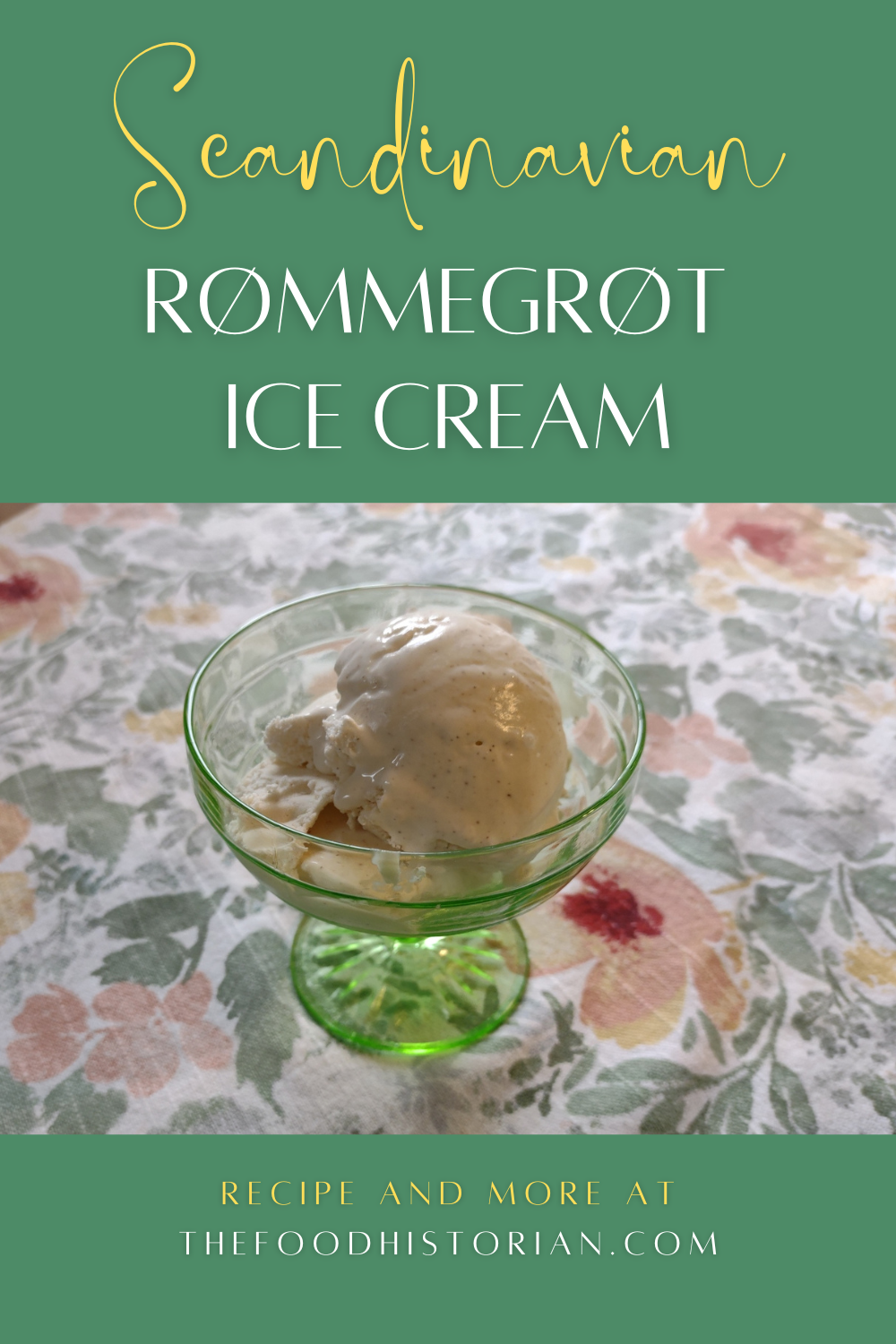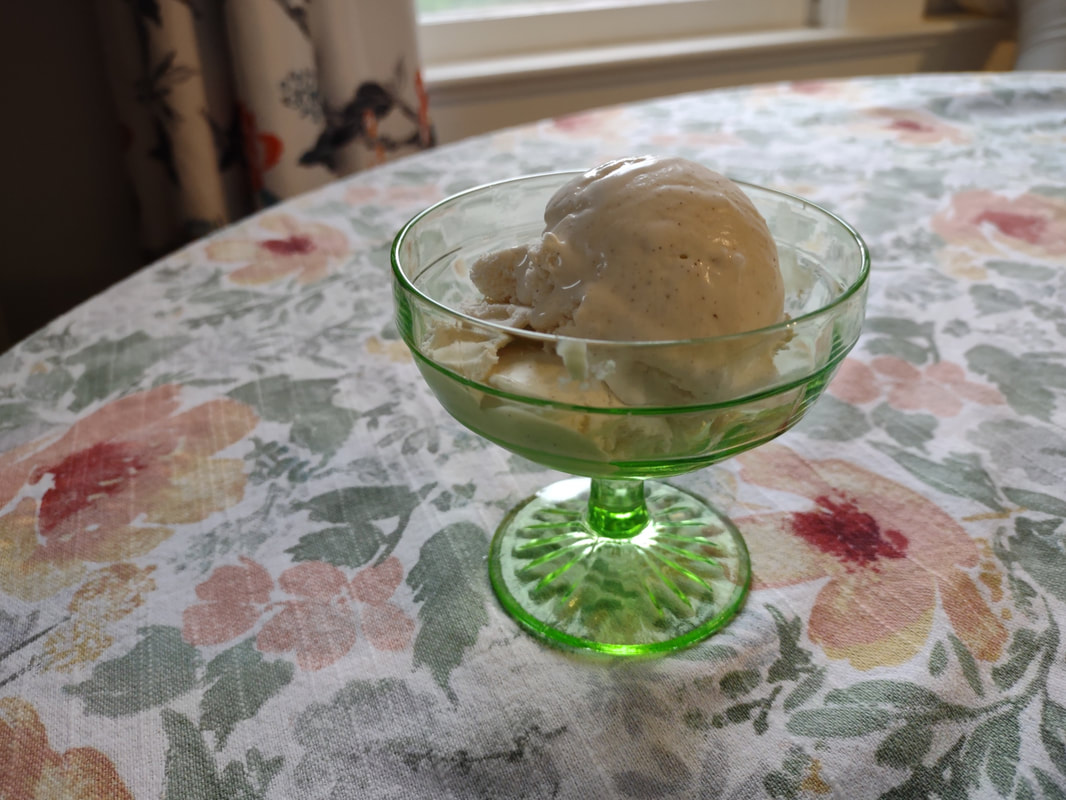|
I can take zero credit for coming up with this genius recipe. That 100% goes to Nevada and her North Wild Kitchen, which is where I first found her recipe for rømmegrøt ice cream. You may be asking yourself, what on earth is rømmegrøt? Rømmegrøt is a traditional Norwegian porridge made from flour and heavy cream, usually served with cinnamon and sugar at Christmastime. The term rømmegrøt means "sour cream porridge," and in Norway the traditional recipe often calls for a mixture of sour cream and milk. But for whatever reason, here in the States, it is almost exclusively made with plain heavy cream. Interestingly, as far as I can tell, the taste is not particularly different, because this ice cream is made with sour cream and it tastes exactly like the rømmegrøt I grew up eating. (If you're interested in the original rømmegrøt, check out my patrons-only post on Patreon, complete with a recipe!) The "real" rømmegrøt is incredibly rich. The flour makes for a smooth, creamy pudding-like texture and as it cooks with the heavy cream it "splits" and "makes" its own melted butter sauce as the flour binds to the dairy proteins in the heavy cream. Historically its richness made it the perfect food for winter holidays, which is why it is so often associated with Christmas. This is also perhaps why soured cream was used, instead of fresh. Cows generally stop producing milk once their offspring are weaned, so winter is the time a lot of cows would "dry up" until they got pregnant again. If a family only had one cow, it would be impossible to get fresh dairy year-round. Rømmegrøt is also a traditional dish for new mothers - the rich but easily digested food helped them recover from the trauma of childbirth, and ensured they got enough calories to keep their babies well-fed. But while this food is, indeed, delicious, eating a rich, stick-to-your-ribs dish in the summer heat is not exactly appealing. Enter the genius rømmegrøt ice cream. Any purchases from links below will result in a small commission for The Food Historian. Rømmegrøt Ice CreamI'm giving you this recipe because although Nevada's North Wild Kitchen recipe is marvelous, I tweaked hers just a little. Fair warning that you will need an ice cream maker for this one. (We got this one as a wedding present and love it.) 12 ounces full fat dairy sour cream (1/2 of a 24 ounce carton) 1 1/2 cups heavy cream 3/4 cup granulated sugar 1/2 teaspoon ground cinnamon In a pourable container, mix all ingredients and whisk well to combine (you could stop at this point and just eat the pourable mix with a spoon, and I always lick the bowl). Pour into the ice cream maker and start. When the ice cream is no longer turning over in the maker, it's pretty much done. You can pack it into a freezer container (these are nice) or serve immediately. Rømmegrøt ice cream has a tangy sweet flavor and including the cinnamon in the ice cream makes all the difference, for me. You can eat it on its own, but it also pairs well with apple pie or crisp, blueberry, blackberry, rhubarb, or strawberry desserts, and gingerbread. I had originally intended to make a big strawberry rhubarb crisp for the party to go with this ice cream, but ran out of time. And since I made two batches of rømmegrøt ice cream in advance, it almost got forgotten altogether! I pulled it out last minute for anyone who had room for a little more dessert. While everyone enjoyed it, I think I was the only one who had ever tasted rømmegrøt before, so perhaps it's slightly less of a delight without the taste memories to work with. I guess this just means I'll have to throw a Scandinavian Christmas party to introduce everyone to the joys of original rømmegrøt! The Food Historian blog is supported by patrons on Patreon! Patrons help keep blog posts like this one free and available to the public. Join us for awesome members-only content like free digitized cookbooks from my personal collection, e-newsletter, and even snail mail from time to time! Don't like Patreon? Leave a tip!
0 Comments
Your comment will be posted after it is approved.
Leave a Reply. |
AuthorSarah Wassberg Johnson has an MA in Public History from the University at Albany and studies early 20th century food history. Archives
July 2024
Categories
All
|



 RSS Feed
RSS Feed